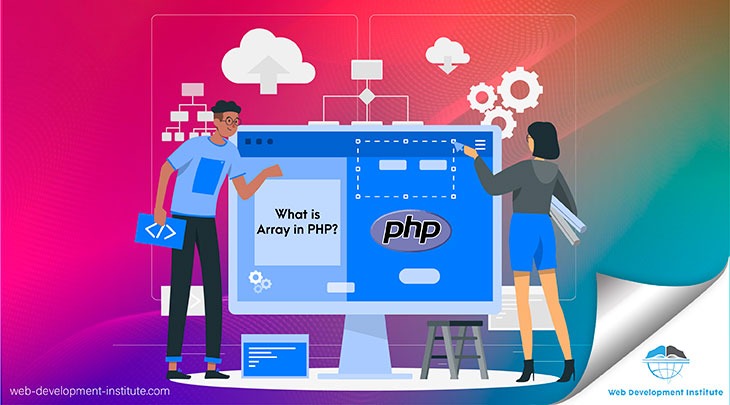WAMP SERVER
WampServer is a Windows web development environment. It allows you to create web applications with Apache, PHP and a MySQL database. It also comes with phpMyAdmin and SQLite Manager to easily manage your databases.
1. Download a copy of WAMP
First you will need to download WAMP from www.wampserver.com

You will have option to choose either 32 bit or 64 bit version your choice depends upon your computer’s configuration.

2. Install the software
When you click next you will be asked to accept the license agreement. Basically it’s a GPL license you are free to do just about anything with it so you can go ahead and accept it.

3. Destination Location
The next step will require selecting where you would like to install WAMP.
The default will be c:/wamp however you can change to which ever directory or partition you choose that please you.

4. Additional Task
After you choose your directory you will have the option to setup icons. If you noticed only one option is selected but you can select the best option for you.

5. Ready to Install
Once you decide on this click Next and then confirm the installation setting again by clicking Install.

6. Default Browser
Once the installation finishes installing its files WAMP will detect which is you default browser at the moment but you can select no and navigate your way to any other browser of your choosing.

7. Firewall
If your window firewall pops up at this point make sure to grant Apache access.

8. PHP Mail Parameters
The next decision you will have to make is to set the PHP mail parameters. Most people leave this set to defaults when setting up a testing server on their local computer.

If you wish to configure it to connect to a SMTP server you may do so now all you need to do is click next.
9. WAMP is installed
WAMP is now installed on your computer.

10. Testing
Now that everything is installed let’s test everything out.

Using one of the icons you created, or start -> WampServer, you can launch management console. Once opened, it will appear in the lower right hand corner of your screen.
11. Running
If WAMP is not started go ahead click Start All Services. If you are not sure whether or not WAMP is running, look for small green W icon in your toolbar.

12. Stopped or Some Services Running
If it is (W) is Red, it means that WAMP services are not running, W Green means everything is running while W Orange means some services are running.

13. Forbidden
Now it is time to check if everything was installed correctly. You have to click on the localhost icon given in the WAMP management console. If you see the following screen pop up in your browser then everything is working but you only need to edit a few files to access WAMP via the localhost link.

14. Fixing localhost
Open the WAMP management console highlight Apache then click on httpd.conf

15. localhost works
From the text editor find the line “Allow from 127.0.0.1” and add “Allow from ::1” below it. Now save the file and close it.

The next step is to restart all the services go to WAMP management console and click restart all services after WAMP has restarted all the services reopen you web browser if you closed it to localhost or just reload the page. If you see the following screen you did the everything right so far now for the finishing touches.
16. Configure Aliases
Since you are on windows 7 or 8 then Apache might be seeing the connections coming from “::1” which is the IPv6 equivalent of 127.0.0.1 so you will have to change the a few settings for you to access phpmyadmin, sqlbuddy and webgrind.

17. phpMyAdmin
Open the WAMP management console highlight Apache followed by Alias directories select the localhost/phpmyadmin option then alias. From the text editor find the line “Allow from 127.0.0.1” and add “Allow from ::1” below it now save the file and close it. Do the same steps for fixing sqlbuddy and webgrind. Once you done open WAMP management console and click restart all services.

18. Configure phpMyAdmin
The last step is to set a password for phpMyAdmin. Many people skip this step because the server is not going to be live so you don’t see the need to protect the database if it is simple data.You can decide what practice to follow.
In order to change the password you will need to navigate to your phpMyadmin file, located at c:/wamp/apps/phpmyadmins3.x.x and open the config.nic.php file for editing.
Once opened, navigate to the lines that read:
$cfg[‘Server’][$i][‘user’] = ‘root’;
$cfg[‘Server’][$i][‘password’] = ‘xxxxx’;
$cfg[‘Server’][$i][‘AllowNoPassword’] = ‘true’;
Where the example reads xxxxx insert your password.
Under AllowNoPassword change the value to false.
19. What do I do next
Now that everything is completed you can upload test websites to your root (c:/wamp/www/) or even install third-party web applications like WordPress, Drupal, Joomla, Magento etc to this location.
Now Enjoy the Learning!
About Author: Myself Puran Chand or PC, an experienced graphic cum web designer working in a popular food and sweets company in Delhi, India. Just to upgrade myself I am learning web development from ADMEC Multimedia Institute. And I m extremely satisfied with this institute’s training methodology. Actually I was given this topic to explore and write something useful on it when I was learning PHP and MySQL here.






